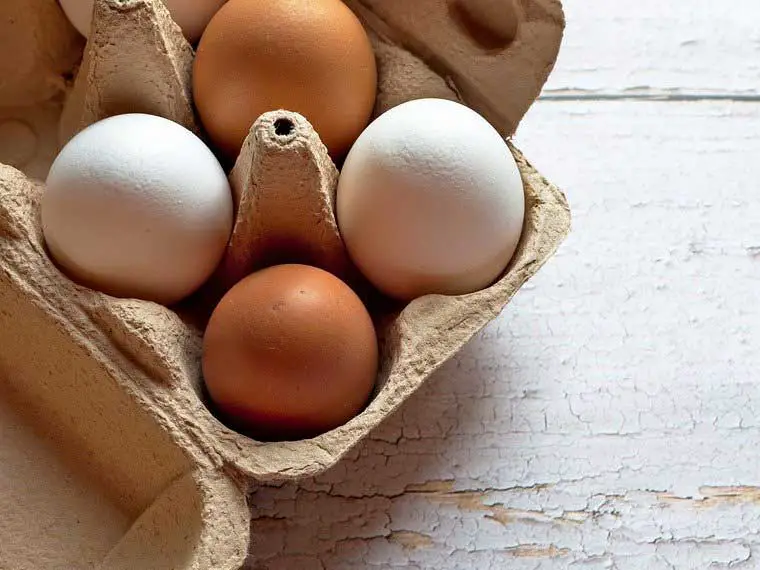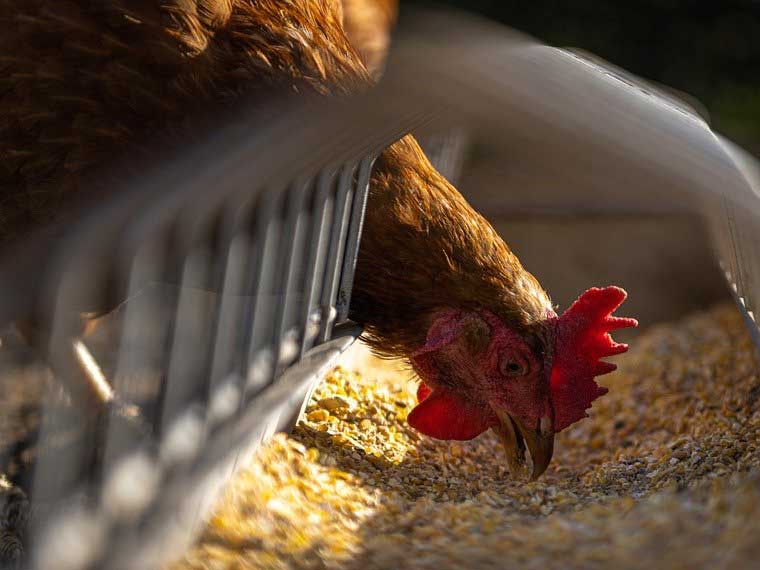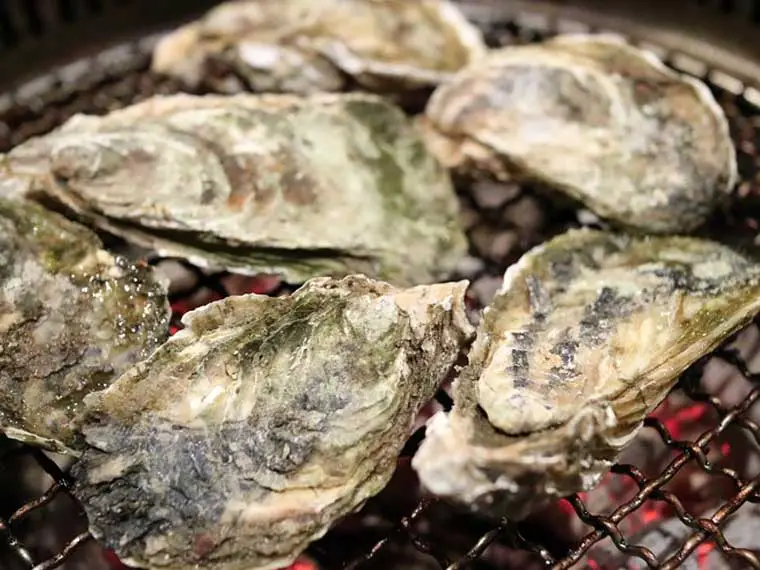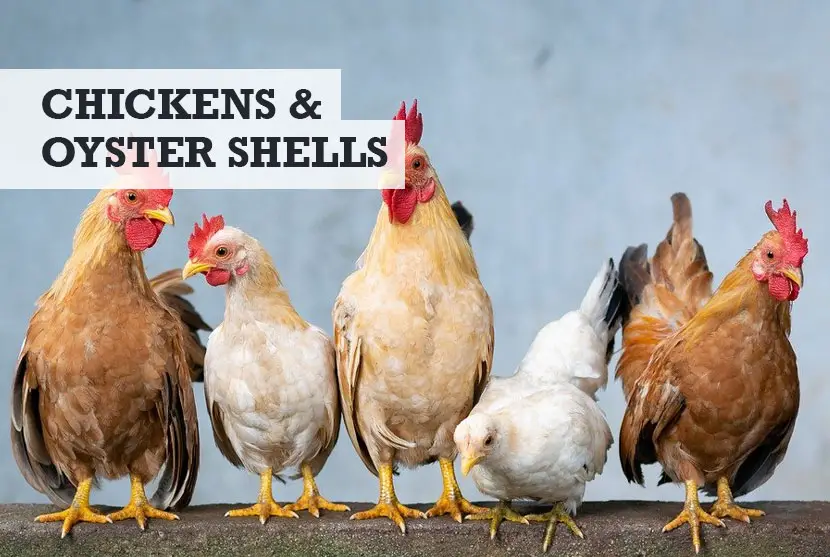As a first-time keeper of birds, you might have heard about crushed oyster shells for chickens and wondered what the deal is. After all, it sounds weird at first that you can give oyster shells to chickens.
However, there’s a long history of chickens eating oyster shells. In this guide I will explain the pros and cons, the benefits, how to prepare and feed them, and when it might be too much for your birds – I will start with the simple facts, then all you would need to know.
Do chickens need oyster shells? Not all chickens need crushed oyster shells. However, hens that are laying eggs will benefit from the additional calcium that is present in oyster shells. Many keepers will give these chickens crushed oyster shells to eat.
That’s the short answer, but before you rush off and prepare crushed oyster shells for your chickens, please take 5 minutes to read the following. It’s important that your chickens don’t eat too much oyster shell.
Are oyster shells good for chickens?
In the world of chicken and egg producers, oyster shells are synonymous with calcium. Otherwise known as soluble grit, crushed oyster shells are rich in this mineral which is vital for the development and maintenance of strong bones, and the overall health of your chickens – and the eggs produced.

Crushed oyster shells are therefore good for chickens, as calcium is important for laying hens, in the production of healthy and strong eggs.
Can chickens eat too much oyster shell?
Care must be taken, to ensure that your chickens do not consume excessive amounts of the crushed oyster, as too much calcium is as detrimental as too little. If you give chickens too much crushed oyster shell, it could result in extra calcium deposits on the shell exteriors.
The question of how much calcium is too much calcium has been asked and researched. There are concerns of excess calcium on shell quality, feed consumption, hatchability of eggs, and a few other factors. One of the studies even went as high as 9.48 g/hen/day!
Chicken Whisperer Magazine, www.chickenwhisperermagazine.com
- Chickens have problems if they ingest too little calcium, or too much. They will also develop problems if the calcium in their diet cannot be absorbed.
- Too little calcium will lead to brittle bones, and a general malaise from ineffective digestion, blood circulation and inflammation due to incorrect pH levels. Laying hens will produce eggs with thin or patchy shells if there is insufficient calcium on their diet.
- Too much calcium will cause problems in the birds’ kidneys, and, in the case of older laying hens, in the liver.
- Simply making calcium available for your chickens is not enough. You need to ensure that their bodies have access to it.
- Calcium is not readily absorbed by the body. It requires catalysts, such as Vitamins C and D3, and certain organic acids, to make it usable. Certain salts and minerals inhibit the absorption of calcium, e.g. phosporous, a salty diet, and saline water.
- If calcium is not absorbed optimally, deposits will develop in the kidneys, and possibly in other parts of the body. In humans, too much calcium can cause hard deposits in the brain, resulting in dementia.
- In the case of laying hens, an excess of calcium will show up in rough patches or deposits on the shells of eggs being laid. Thin or patchy eggshells usually indicate a lack of calcium.
With those warnings out the way, just how much oyster shells should chickens have?
How much oyster shells do you give chickens?
This is not an easy question to answer, as it really does depend. The best way of describing how much oyster shells is probably this response on the BackyardChickens.com website forum.
Layer contains calcium. If all they eat is layer, then they are probably getting enough calcium and do not need oyster shell. If they free range or have access to outside and you live in limestone country, the rock and sand they use for grit probably contains quite a bit of calcium, in which case they probably do not need oyster shell. Are your eggshells hard? If they are, you do not need oyster shell. I consider calcium like practically everything else. If you or they get too much of it, it can possibly cause more harm than good. I don’t know that for a fact, but I don’t see any benefit in forcing them to eat calcium or anything else in excess.
It is best to offer your chickens crushed oysters and other supplementary sources of calcium in a separate feeding bowl for the chickens to help themselves. The birds have an innate ability to assess how much extra calcium their bodies need.
In other words, they should regulate it. But keep an eye out and watch them.
Oyster shells are a convenient source of calcium as they are widely available and easy to obtain. Whilst you can crush your own, it’s tough work. Here’s a good pre-prepared brand you can buy on Amazon.
They are relatively inexpensive, can be purchased in bulk and stored safely until needed.
Why chickens need calcium
All chickens need calcium for robust health. Calcium is necessary for the following body functions:
- it is vital for building strong bones.
- it aids in digestion by stimulating the production of enzymes.
- it helps maintain a healthy nervous system.
- it regulates the chicken’s heart rate.
- it promotes the blood’s ability to clot.
- it helps to stabilise the body’s pH balance.
- it is a contributor to longevity and for the general wellbeing of your chickens.
For laying hens, there are additional benefits, namely:
- it is necessary for the production of reproductive hormones.
- it helps with muscle spasm, especially the contractions needed for laying eggs.
- it determines the strength of the eggshell that protects the unborn chicks.
- it is especially important for hens as they age and produce larger eggs.
Laying hens need at least 4 grams of calcium per day as well as extra proteins. Each egg contains around 2 grams of calcium, in the shell and in the egg itself.
It is important to remember that nature sees reproduction of a species as a priority, even at the expense of the parent or host.
To this end, calcium is first sourced in the diet, to produce an egg. If there is insufficient calcium available in the diet, it will be sourced from the chicken’s bones.
However, if a hen senses that there is not enough calcium in her diet, she may resort to eating her eggs once they have been laid. Neither of these two scenarios is desirable.
Calcium levels need to be adjusted, according to the needs of the layers. Prolific layers will need more than young, immature hens. Older hens may need more, but care must be taken not force production in hens that are past the prime of their egg production life cycles.
In certain seasons, egg production falls. This could be due to extreme temperatures, a lack of water, or other environmental factors. In these times, less calcium will be needed.
Alternatives to oyster shells for chickens

Commercial feeds
A good quality scratch feed is fine for a general population of chickens. It should contain a balance of the minerals needed for calcium ingestion and absorption.
Laying hens need a laying mash which contains extra calcium and the protein necessary for healthy egg production. Hens start laying eggs at around 20-21 weeks so they should be started on laying mash when they are 18 weeks of age.
Limestone or calcium carbonate
Calcium carbonate is a cheaper alternative to oyster shells for chickens and is often used as an ingredient in commercial feeds. This can lead to an understated amount of calcium being made available in your chickens’ diet. On its own, it tastes like chalk, and birds tend to find it unpalatable.
Limestone contains calcium carbonate but in variable and unpredictable quantities. It is even cheaper than calcium carbonate which tempts many commercial producers to use it instead of oyster shells.
Used chicken egg shells
Since time immemorial, chicken farmers have been addressing the need for additional calcium by feeding eggshells back to their chickens, once they have enjoyed the contents of course.
Preparing the eggshells is time consuming but effective. They need to be baked in order to remove any possible contamination by bacteria, e.g., salmonella. This is important for anyone working with the eggs, and for the chickens that will be eating them. Salmonella can also find its way into your soil through contaminated eggshells.
Baked eggshells are easier to crush than raw eggshells. This is important as they need to be crushed in order to disguise them. If chickens get the notion that they can obtain additional calcium from eggs, they may indulge in ‘egg stealing’, the act of eating their own eggs.
Preparing eggshells properly, in order to provide extra calcium, is time consuming. Also, they cannot be produced in the quantities and the convenience associated with crushed oyster shells.
Dairy products
If you have a steady supply of dairy products, you can feed these to your chickens. These birds are generally not lactose intolerant, but it will cause an upset in their digestive system and will most likely produce the runs.
The best form of dairy for laying hens, is yoghurt. This will provide the calcium and protein that they need.
Free range victuals
Chickens are omnivores and will eat insects if they can find them. Insects provide protein and their exoskeletons contain calcium. There are also proteins and trace minerals, in varying measure, in the plants and grains that free range chickens eat.
If your chickens start showing any signs of calcium deficiency, it will be necessary to supplement their diets with additional sources.
Oyster shells for chickens
Crushed oyster shells are an excellent source of calcium as they are soluble in the gut of the bird. In addition, they offer a slow release of calcium which has additional overall health benefits and is available throughout the long egg production and laying processes.
Oyster shells for chickens are available in a convenient crushed form. They can be purchased in bulk and are relatively inexpensive. If stored correctly, the shells can be kept for several months without fear of contamination.
It is recommended that the oyster shells be offered in a separate feed bowl from the regular rations of scratch feed or laying mash, so that the birds do not ingest unnecessary or excessive quantities of calcium.
Chickens are good at understanding their own dietary requirements and will self-regulate their intake of the oyster shells.
How do you prepare oyster shells for chickens?

If you decide to not buy pre-prepared shells, you can prepare them yourself. Here’s a very brie guide on how to do that:
- Bake the oyster shells at 250 °F (121 °C) for 10 minutes.
- Remove them, let cool, then put them into a bag or pillowcase.
- Place on a hard surface and hit at the bag with a hammer.
- Take the crushed oyster shells and place into a food blender to create more of a powder.
Conclusion
You can give oyster shells to chickens, but only if you feel it’s necessary. It might well be that your hens are getting the calcium they need from another source.
You might also like…
Image in header via https://pixabay.com/photos/chicken-rooster-hen-chicks-easter-4849979/



